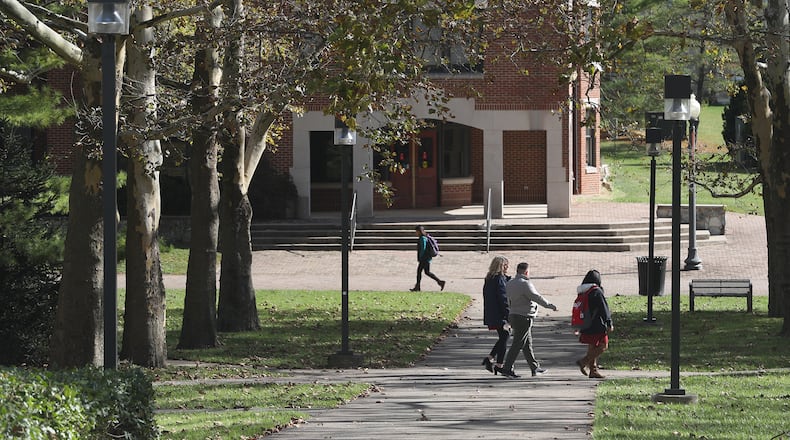“Enrollments are not getting better,” said Doug Shapiro, executive director of the National Student Clearinghouse Research Center. “They’re still getting worse.”
Although undergraduate enrollment has declined an additional 3.2%, making it a total of 6.5% since fall 2019, graduate enrollment increased by 2.1%, totaling 5.3% over two years.
“Far from filling the hole of last year’s enrollment declines, we are still digging it deeper,” Shapiro said. “A year and a half into the COVID-19 pandemic, we continue to see significant nationwide declines in undergraduate students, and community colleges remain the most adversely affected sector.”
Locally, Wittenberg University’s fall enrollment has continued to decline over the last two years. There are 1,326 students enrolled this fall semester; 1,488 students in fall 2020 and 1,619 students in fall 2019, according to the its school’s Office of Institutional Research.
Community colleges remain the most affected sector, experiencing a 14.1% total U.S. enrollment decline since fall 2019, Shapiro said.
However, some local community colleges in the Miami Valley said they did not see the great declines that community colleges nationwide did. Clark State College reported it had an increase of about 1% in enrolled students this year compared to last fall.
Clark State’s overall headcount for fall 2021 is 5,129, said Dawayne Kirkman, vice president of student affairs. Th college’s new and returned students increased by 4% and 9%, respectively, he said.
“While our continuing students are enrolling at the same percentage rate from fall 2020 to fall 2021, we are down in continuing students,” Kirkman said.
To help with enrollment, the college held two kickoff events in October, and have five events scheduled in November for the spring 2022 semester, he said.
Other area colleges that reported a decline in student enrollment include Wright State University and Sinclair Community College, while University of Dayton, Miami and Cedarville reported small increases.
But many U.S. students are simply choosing not to go to community college. This year’s first-year class at community colleges is now 20.8% below 2019′s, while the first-year enrollment numbers at all institutions are 12.3% smaller than in 2019, the National Student Clearinghouse Research Center said.
First-year enrollment fell about 3.1% this fall. The rate of decline is less than autumn 2020′s 9.5% loss, but the numbers have not stabilized nor shown a level of increase required to restore the losses from 2020′s entering class.
Community colleges historically serve populations that come from lower incomes or are not white, and those populations seem to have left college, according to the same research.
Shapiro noted that some of these students seem to have been lured away, possibly into the labor market.
“These are the students who have always been the most on the margin between college and the workforce, and also the most powerfully pulled away by the need to support their families through hard times,” Shapiro said.
Among public four-year institutions, highly selective state flagships increased about 1% while less selective public saw enrollment fall by 5.2% overall, the National Student Clearinghouse Research Center said. Public two-year institutions again showed the sharpest freshman enrollment declines among the three largest sectors at -6.1%.
Area colleges up close
Here’s what local colleges and universities saw in their initial enrollment counts:
- Wittenberg University had 1,300 students enrolled as of Aug. 30, the first day of classes, down from 1,455 students in fall 2020.
- Clark State had 5,129 students enrolled for fall semester, about an 1% increase compared to last fall.
- Cedarville University gained 3.6% more students than last fall.
- Sinclair Community College reported a decline of about 2% in enrollment compared to 16,304 students in fall 2020.
- Wright State’s preliminary enrollment count fell about 6% compared to 2020 preliminary numbers, with 11,469 students enrolled in the fall 2021 semester.
- University of Dayton says it predicts a record-high enrollment of about 12,030 students, up about 3% from last fall.
- Miami University reports 23,045 students are enrolled for fall semester, up about half a percent from last fall semester.
- University of Cincinnati reports 35,339 undergraduate students enrolled for fall semester and a total of 46,710 students are enrolled overall, compared to preliminary enrollment of 46,798 students across all campuses in 2020.


